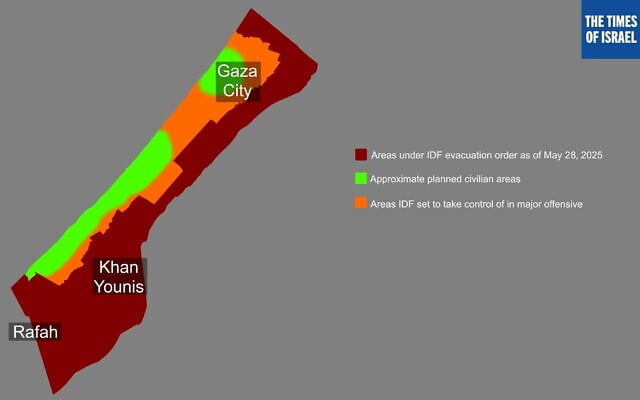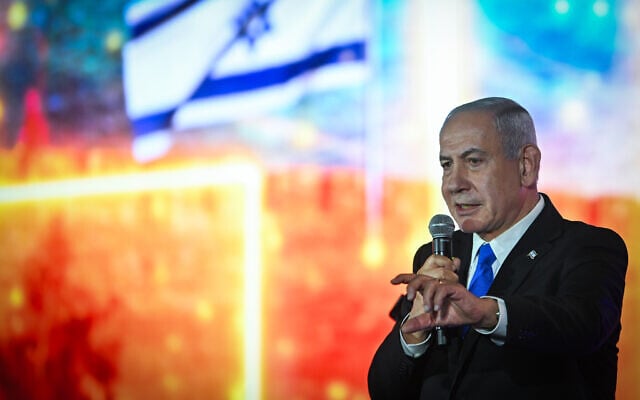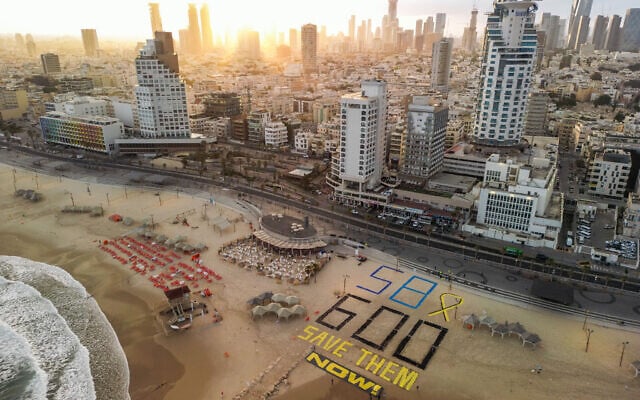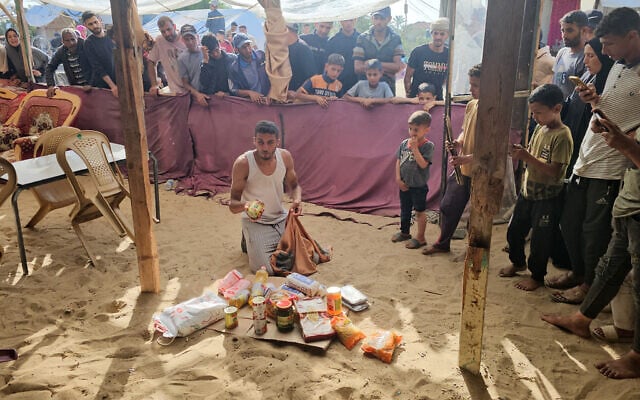



This Editor’s Note was sent out earlier Wednesday in ToI’s weekly update email to members of the Times of Israel Community. To receive these Editor’s Notes as they’re released, join the ToI Community here.
Six hundred days after Hamas invaded southern Israel, slaughtering 1,200 people and abducting 251, the Netanyahu government has embarked upon what amounts to a deadly game of chicken with Gaza’s would-be Israel-destroying terrorist leadership and gunmen — a high-risk strategy in the course of which Israel is losing most of its remaining allies and increasingly becoming a pariah state.
The IDF at the start of this week told military reporters, including The Times of Israel’s, that its latest Gaza military offensive aims to secure full control of 75% of the Gaza Strip within the next two months. (It currently claims to control some 40%.)
As it cements its hold in those areas, the IDF said, it is destroying Hamas’s infrastructure — notably including the hundreds of miles of still-intact tunnels — and razing most of the buildings, essentially rendering three-quarters of the Strip uninhabitable. In contrast to its previous ground operations, including at the start of the war launched after Hamas’s October 7, 2023, massacre, the IDF said it does not intend to withdraw its forces from the captured areas for the foreseeable future.
As for the two million Gazans, they are being ordered to evacuate to three areas — southern Gaza’s coastal Mawasi area, to where some 700,000 Gazans are already displaced, a coastal strip in central Gaza’s Deir al-Balah and Nuseirat, and central and coastal areas of Gaza City in the north of the Strip. The IDF does not intend to send ground forces into the Mawasi area and the other relatively safe zones, but does not rule out limited operations even in those areas against Hamas targets.
While the newly declared details mark a shift in priorities — from relentless strikes on Hamas operatives to the capture of territory and destruction of infrastructure — air raids and other strikes on key Hamas figures are continuing. The IDF has indicated that it operates according to a formula for how many noncombatants, including the families of Hamas targets, it risks killing in such strikes, based on the legal principle of proportionality, but has not been prepared to disclose those calculations.
It is also often proving disinclined to comment in detail on the circumstances even of specific strikes with globally resonant consequences — a stance that, given Israel’s near-invisible civilian public advocacy, means the world gets a Hamas-driven narrative and, broadly, no Israeli narrative at all.
The IDF has to date provided no substantive detail and only briefly confirmed, for example, that it carried out a strike in the Khan Younis area where nine children of two Gaza doctors were allegedly killed last Friday, saying it was probing the incident, stressing that the area was supposed to have been evacuated weeks ago, and noting that it had been targeting suspects in a specific building.
The goal of the intensified military campaign, Prime Minister Benjamin Netanyahu has stated, is to advance the achievement of what are now the four declared goals that will constitute his promised “total victory” and enable the end of the war: destroy Hamas, secure the release of all the hostages, ensure that Gaza can never again constitute a threat to Israel and, as specified by the prime minister last week, implement US President Donald Trump’s “correct” and “revolutionary” plan for the relocation of Gazans outside the Strip.
Asked by the military reporters this week what, in the IDF’s operational planning, is to become of the two million Gazans being forcibly displaced to the three relatively safe zones of the Strip, the IDF briefers had no answer.
It was, indeed, Donald Trump who proposed what he initially described as the forced relocation of all non-Hamas Gazans, but Trump is now publicly impatient with the ongoing war and increasingly publicly concerned for the well-being of Gaza’s civilians. Many Gazans have indicated a willingness to leave, but no country has yet come forward to take them in en masse.
As things stand, Israel will have displaced Gaza’s entire population and taken over the areas where it used to live, amid a rising tide of domestic and international criticism, hoping that Hamas will feel sufficiently pressured as to free some or all of the hostages without a declared pledge by Netanyahu to end the war. The IDF fervently wishes that this will prove the case — in no small part because of the challenge of maintaining an open-ended hold on three-quarters of the Gaza Strip, when reservists are under unprecedented strain and there are multiple challenges on other fronts.
Hamas knows all this. Gaza’s ultra-cynical terrorist masters know that Trump is impatient. That Israel is increasingly isolated — diplomatically, economically, physically (especially since the Houthis hit Ben Gurion Airport), and in global public opinion. That even Germany, that most supportive of Israel’s allies given its special, terrible history, is now openly branding Israel’s current military operations unjustifiable.
Hamas knows, too, that Israel is itself riven, over the hostage-release strategy, over the inequality of the military burden under a government perpetuating ultra-Orthodox refusal to serve, and over the coalition’s far-right calls to permanently occupy and resettle the Strip — the overt long-term goal of Bezalel Smotrich and Itamar Ben Gvir, without whose parties Netanyahu has no government.
And, of course, Hamas knows that Israel is riven over the moral implications of this phase of the conflict — the Jewish state forcing an entire populace from their homes, first pushing Gazans into deep hunger and now reluctantly struggling to supply aid.
Far from blinking, the fear is that Hamas, which cares nothing for Gazans and for the ruin it has brought down upon the Strip, is laughing.






